
The University of Hawaiʻi System, formally the University of Hawaiʻi and popularly known as UH, is a public college and university system that confers associate, bachelor's, master's, and doctoral degrees through three universities, seven community colleges, an employment training center, three university centers, four education centers and various other research facilities distributed across six islands throughout the state of Hawaii in the United States. All schools of the University of Hawaiʻi system are accredited by the Western Association of Schools and Colleges. The UH system's main administrative offices are located on the property of the University of Hawaiʻi at Mānoa in Honolulu CDP.

The University of Hawaiʻi at Mānoa is a public land-grant research university in Mānoa, a neighborhood of Honolulu, Hawaii. It is the flagship campus of the University of Hawaiʻi system and houses the main offices of the system. Most of the campus occupies the eastern half of the mouth of Mānoa Valley, with the John A. Burns School of Medicine located adjacent to the Kakaʻako Waterfront Park.

The Harold L. Lyon Arboretum is a 200-acre (0.8 km2) arboretum and botanical garden managed by the University of Hawaiʻi at Mānoa located at the upper end of Mānoa Valley in Hawaiʻi.
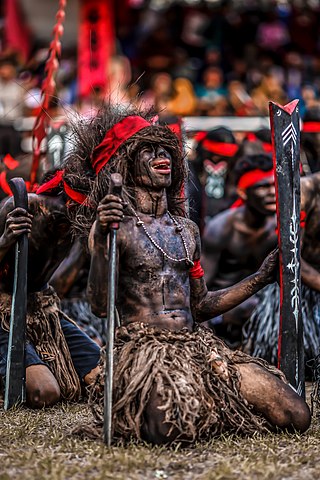
Cakalele dance is a war dance from North and Central Maluku in Indonesia. Hybrid versions also exist among the natives of Sulawesi, Timor, and the Tanimbar Islands. The dance is performed by men, two of whom represent opposing captains or leaders while the others are the warriors supporting them. After an opening ritual, the captains engage in a mock-duel with a spear (sanokat) and long knife (lopu) while their supporters use a long knife in the right hand and a narrow wooden shield in the left hand. The shield is referred to as a salawaku, or by a local name such as the Tobelo o dadatoko. The cakalele originated as a way for the warriors to celebrate after a successful raid. Dancers dress in full warrior costume and are backed by the rhythm of the drum and gong (tifa) and fife (sulin).

A war dance is a dance involving mock combat, usually in reference to tribal warrior societies where such dances were performed as a ritual connected with endemic warfare. Martial arts in various cultures can be performed in dance-like settings for various reasons, such as for evoking ferocity in preparation for battle or showing off skill in a more stylized manner. It could also be for celebration of valor and conquest. Many such martial arts incorporate music, especially strong percussive rhythms.
The Hamilton Library at the University of Hawaiʻi at Mānoa is the largest research library in the state of Hawaii. The Library serves as a key resource for the flagship Manoa campus as well as the other University of Hawaii system campuses.
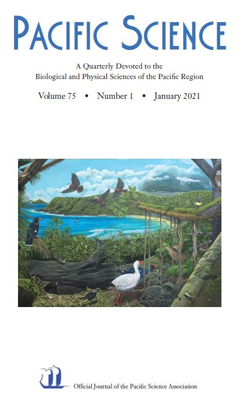
Pacific Science is a quarterly multidisciplinary peer-reviewed scientific journal covering the biological and physical sciences of the Pacific basin, focusing especially on biogeography, ecology, evolution, geology and volcanology, oceanography, palaeontology, and systematics. It is published by the University of Hawaiʻi Press and was established in 1947. It is the official journal of the Pacific Science Association.
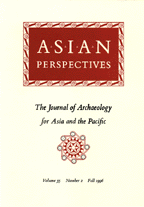
Asian Perspectives: The Journal of Archaeology for Asia and the Pacific is an academic journal covering the history and prehistory of Asia and the Pacific region. In addition to archaeology, it features articles and book reviews on ethnoarchaeology, palaeoanthropology, physical anthropology, and ethnography. The journal was established in 1957 as the Bulletin of the Far-Eastern Prehistory Association under the editorship of Wilhelm G. Solheim II, then followed its editor to other institutions. Volumes II (1958) through VIII (1964) were published by Hong Kong University Press, and volumes IX (1966) through XI (1968) by the Social Science Research Institute at the University of Hawaii. The University of Hawaii Press became the publisher from volume XII (1969), adding the subtitle A Journal of Archaeology and Prehistory of Asia and the Pacific. In 1992, the editorship passed to Michael W. Graves and the subtitle was changed to The Journal of Archaeology for Asia and the Pacific. Miriam Stark at the University of Hawaiʻi served as editor from 2000 through 2006, then the editorship passed to three-person team: Deborah Bekken, Laura Lee Junker, and Anne P. Underhill. Currently, editor-in-chiefs are Francis Allard, Bérénice Bellina-Pryce, and Julie S. Field.

Academy of Korean Studies is a South Korean research and educational institute with the purpose of establishing profound research on Korean culture. It was established on June 22, 1978, by Ministry of Education & Science Technology of South Korea (교육과학기술부). The Academy has dedicated to interpreting and analyzing Korean culture in general, defining the academic identity of Korean studies, and educating scholars.

Language Documentation & Conservation is a peer-reviewed open-access academic journal covering all topics related to language documentation and conservation, including the goals of data management, field-work methods, ethics, orthography design, reference grammar design, lexicography, methods of assessing ethnolinguistic vitality, archiving matters, language planning, areal survey reports, short field reports on underdocumented or endangered languages, reports on language maintenance, preservation, and revitalization efforts, plus reviews of software, hardware, and books.
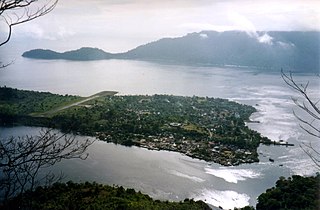
Banda Neira is an island in the Banda Islands, Indonesia. It is administered as part of the administrative Banda Islands District within the Central Maluku Regency in the province of Maluku. To the south is the main town of the same name, which is the largest town in the archipelago with around 7,000 inhabitants.
The Hawaiian Entomological Society was formed in early 1900 and first convened on January 26, 1905 in the Board Room of the Bureau of Agriculture and Forestry in Honolulu, Hawaii. The original officers of the group included the prominent British entomologist, ornithologist, and naturalist Robert Cyril Layton Perkins (President), Alexander Craw, Jacob Kotinsky (Secretary-Treasurer), Otto H. Swezey,, D.L. Van Dine, and G.W. Kirkaldy (Editor). The society publishes the Proceedings of the Hawaiian Entomological Society.
Lyonia was an electronic, peer-reviewed interdisciplinary scientific journal published by the Harold L. Lyon Arboretum and stored in the ScholarSpace digital institutional repository of the University of Hawaii at Manoa library. The journal was dedicated to the distribution of original ecological research and how it may be implemented in environmental protection. Papers published in Lyonia covered a range of disciplines including ecology, biology, anthropology, economics, law, etc. that pertain to conservation, management, sustainable development, and education in mountain and island settings. The journal was particularly interested in the mountain forests in tropical areas. Lyonia was first published in March 1974 and continued until December 1989.
Kei is an Austronesian language spoken in a small region of the Moluccas, a province of Indonesia.
Leonard Andaya is Professor of Southeast Asian History at University of Hawaii at Manoa. His concentration is in the modern history of Southeast Asia, particularly that of Malaysia, Indonesia, the southern Philippines, and southern Thailand.
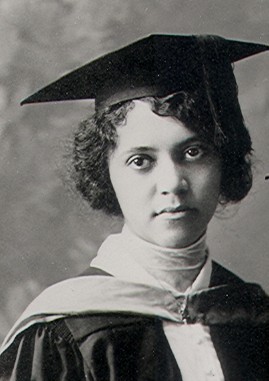
Alice Augusta Ball was an American chemist who developed the "Ball Method", the most effective treatment for leprosy during the early 20th century. She was the first woman and first African American to receive a master's degree from the University of Hawaiʻi, and was also the university's first female and African American chemistry professor. She died at age 24 and her contributions to science were not recognized until many years after her death.
The Hawaiian Historical Society, established in 1892, is a private non-profit organized by a group of prominent citizens dedicated to preserving historical materials, presenting public lectures, and publishing scholarly research on Hawaiian history. The first president was Charles Reed Bishop, who founded the Kamehameha Schools in honor of his wife Princess Bernice Pauahi Bishop. Governor Sanford B. Dole also served as President of the Society. Early members included historians Nathaniel Bright Emerson and Ralph Simpson Kuykendall.

A Salawaku, is a traditional shield originating from the Maluku Islands, Indonesia. It is also known as Ma Dadatoko, Salwake, Saluwaku or Salawako in Galela, Salawakunu in Loloda, Hawau-mu in Madole, Emuli in Buru or O Dadatoko in Tobelo.

Banda Besar, historically also known as Lonthoir, is the largest of the Banda Islands in Indonesia. It is administered as part of Banda District, Central Maluku Regency, Maluku Province.
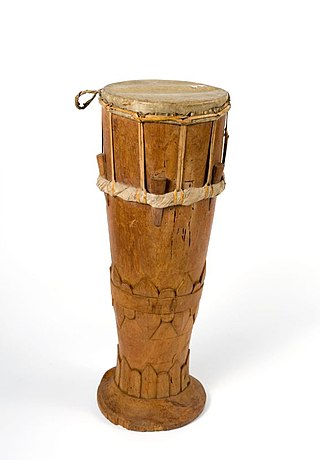
The tifa, tiwa or tiva is a single-headed goblet drum used throughout the Maluku Islands of Eastern Indonesia, where it is traditionally the "dominant instrument" in Maluku province music. The term tifa has been used outside of the Maluku Islands, including on the island of Java and on the island of New Guinea, in Indonesia's Papua province.












